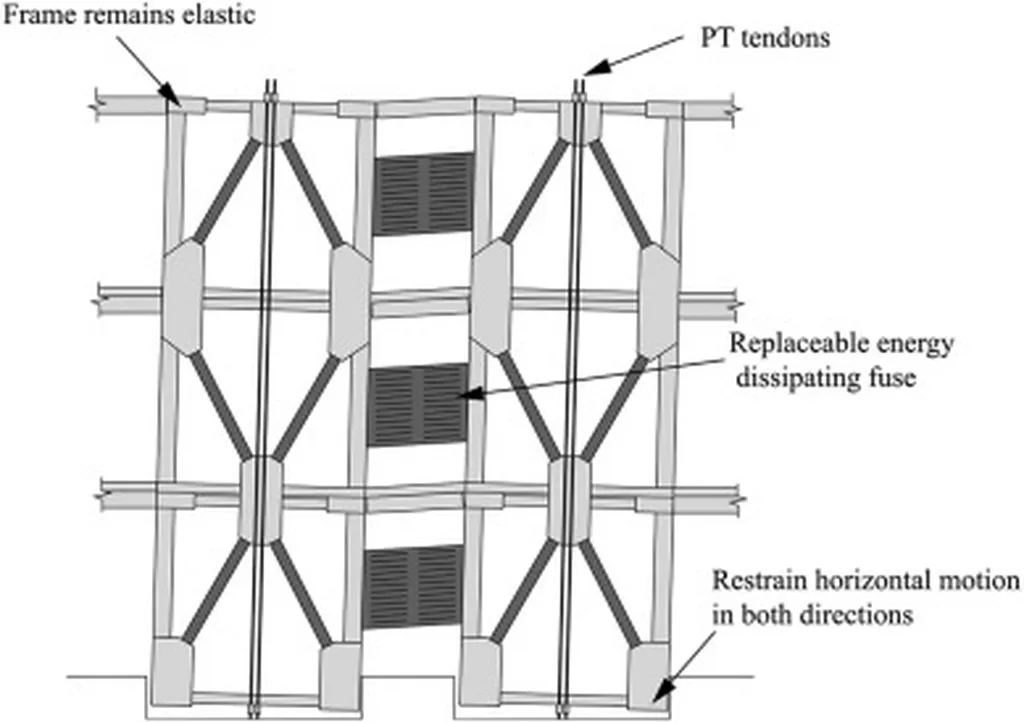In the quest to enhance the resilience of buildings against seismic events, a groundbreaking development has emerged from the research of Dr. Zhu Jianbo, published in the journal *Jianzhu Gangjiegou Jinzhan*, which translates to *Advances in Structural Engineering*. The study introduces a novel structural component designed to significantly improve the earthquake resistance and post-disaster recovery capabilities of central braced steel frame structures.
Dr. Zhu’s research focuses on the self-centering coupled shear link (SC-CSL), a component that leverages the unique properties of shape memory alloys (SMA) and disc springs to create a system with superior seismic performance. “The SC-CSL is designed to not only withstand the immense forces of an earthquake but also to return to its original position with minimal residual deformation,” explains Dr. Zhu. This capability is crucial for reducing repair costs and downtime in the aftermath of seismic events, particularly in commercial and industrial buildings where continuity of operations is paramount.
The SC-CSL operates on a sophisticated mechanism: under tensile forces, the SMA rods are stretched while the disc springs remain stationary, and under compressive forces, the disc springs compress while the SMA rods stay static. This dual-action system ensures that the structure can absorb and dissipate seismic energy effectively. “The beauty of this design is its simplicity and efficiency,” says Dr. Zhu. “It combines the superelastic properties of SMA with the recovery force of disc springs to create a robust and reliable seismic resistance mechanism.”
To validate the design, Dr. Zhu and his team employed corrected finite element analysis to study the mechanical properties of the SC-CSL, focusing on its hysteresis performance and failure modes. They then conducted a parameter analysis on ten models, varying the diameter of the SMA rods and the stiffness of the disc springs. The results were promising: increasing the diameter of the SMA rods and the stiffness of the disc springs enhanced the load-bearing capacity, secant stiffness, and self-centering ability of the component, while reducing residual deformation and equivalent viscous damping ratio.
The implications for the construction and energy sectors are substantial. Buildings equipped with SC-CSL technology can better withstand seismic events, reducing the risk of structural failure and the associated costs of repair and reconstruction. This is particularly relevant for energy infrastructure, such as power plants and refineries, where structural integrity is critical for safety and operational continuity.
Moreover, the research provides a theoretical foundation for the analysis and design of SC-CSL components, paving the way for future advancements in seismic-resistant construction. As Dr. Zhu notes, “This technology has the potential to revolutionize the way we design and build structures in seismic zones, ensuring greater safety and resilience for communities and industries alike.”
Published in *Jianzhu Gangjiegou Jinzhan*, Dr. Zhu’s research represents a significant step forward in the field of structural engineering, offering a promising solution to one of the most pressing challenges in construction: enhancing the seismic performance of buildings and infrastructure. As the world continues to grapple with the impacts of natural disasters, innovations like the SC-CSL offer hope for a more resilient and sustainable future.

